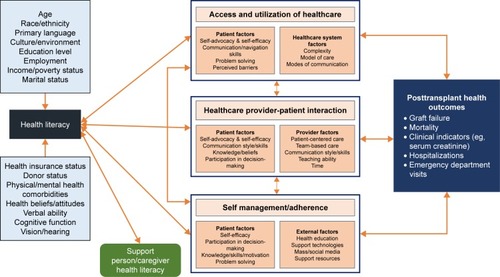Figures & data
Figure 1 Health literacy model in transplantation (HeaL-T): patient-level factors, healthcare-level factors, and outcomes associated with health literacy in the solid-organ transplant population.a,15,16

Table 1 Relationships between patient-level factors and health literacy
Table 2 Intervention strategies, tools, and resources to address low health literacyCitation9,Citation22,Citation91–Citation105,Citation108–Citation110
